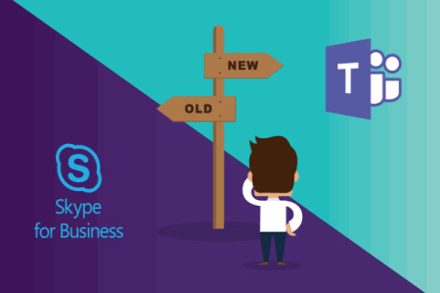As the business landscape continues to evolve, businesses are seeing the value of collaboration tools at the centre of their communications, driven by a demand for remote and mobile working solutions.
To meet this demand, it is now possible for Microsoft’s popular Teams platform to provide a ‘voice solution’ alongside its existing offering. Lets take a look at how Microsoft Teams can now be used as a fully fledged telephone system more commonly referred to as ‘Direct Routing’;
What is Direct Routing?
Although Microsoft Teams is primarily used as an internal communication and collaboration tool, Microsoft’s development of ‘Direct Routing’ has allowed Teams to be used as a full Business Phone System (PBX), by connecting or ‘routing’ external phone lines to the platform.
Direct Routing allows Microsoft Teams to be used as a true unified communications platform, through the management of inbound and outbound calls, whilst leveraging all of the traditional benefits of Teams. Additionally, Direct Routing allows you to remain with your own telephony provider for your lines and minutes, benefitting in cheaper call rates, more flexibility and better support.
So, you're probably wondering how Direct Routing works?
Direct Routing works by connecting the Microsoft Teams system to traditional phone networks (PSTN) using two key elements;
Session Border Controller (SBC):
You may hear this described as a 'firewall' or ‘VoIP’, which acts as a border between different networks, providing a layer of security and protection when transferring voice data.
SIP Trunks:
SIP Trunking is an essential component of Direct Routing, and is the process of connecting business phone systems (PBX), the internet and traditional phone networks (PSTN).
What are the benefits?
True Unified Communications:
Unifies your communications, such as video, meetings and file share with your in-bound and out-bound calls to provide a rounded communications platform.
Choose your own provider:
With the right provider savings can be made on upfront costs and on-going fees, as well as having access to expert support
Port your own numbers:
Direct Routing with Teams allows you to keep your existing numbers alongside any new DDI’s.
Teams Call Recording:
We have developed a compliant call recording solution for Microsoft Teams. With features such as selective recording and long term storage.
Teams Call Centre:
Dynamic have an active partnership with Mida to offer a complete call centre solution for Microsoft Teams.
Direct Routing Setup
Getting setup is easier than you think!
Number porting & new numbers:
Simply request to port existing numbers, or request new ones! Depending on the numbers this can take anywhere from a few days to a couple of weeks.
Set up of SIP Trunks and SBC’s:
As the foundation of Direct Routing, Session Border Controller (SBC) and the SIP Trunks should take less than a day for the provider to set both of these elements up.
Test & Train:
Once set up, a provider, we will work with you to test inbound and outbound calls before going live, as well offering additional training and support to ensure your colleagues are familiar with the new interface ,and that any previous call groups or call behaviour have been set up.
Dynamic Insights & Advice

Dynamic Networks Group Continues Its Expansion
Dynamic Networks Group continues its expansion with the acquisition of Peak Support Services Ltd, a Derbyshire based Cloud MSP.

Dynamic Networks completes a Management Buyout and commences its acquisition strategy
David Smith (CEO) and Gareth Leece (COO) have successfully completed an MBO of Dynamic Networks, working with Paul Landsman of Kingland Capital. The MBO provides for a simplification of the Board structure to allow for its continued accelerated growth strategy.

10 reasons to archive your business emails in the cloud
For most organisations, email has become an essential part of daily workflow and communications. However, many businesses are unaware of the importance of archiving their emails and having an email retention strategy.

Planning a successful migration to the cloud
Moving to the cloud comes with multiple benefits. For most businesses, it usually means reducing running costs, faster modernisation capabilities and increased security.

2021 IT trends your business should be thinking about
Here are our top IT trends and predictions your business should be thinking about now to prepare for 2021.

The end of Skype for Business is closer than you think...
Microsoft have recently announced that Skype for Business Online will be retiring on July 31, 2021.


